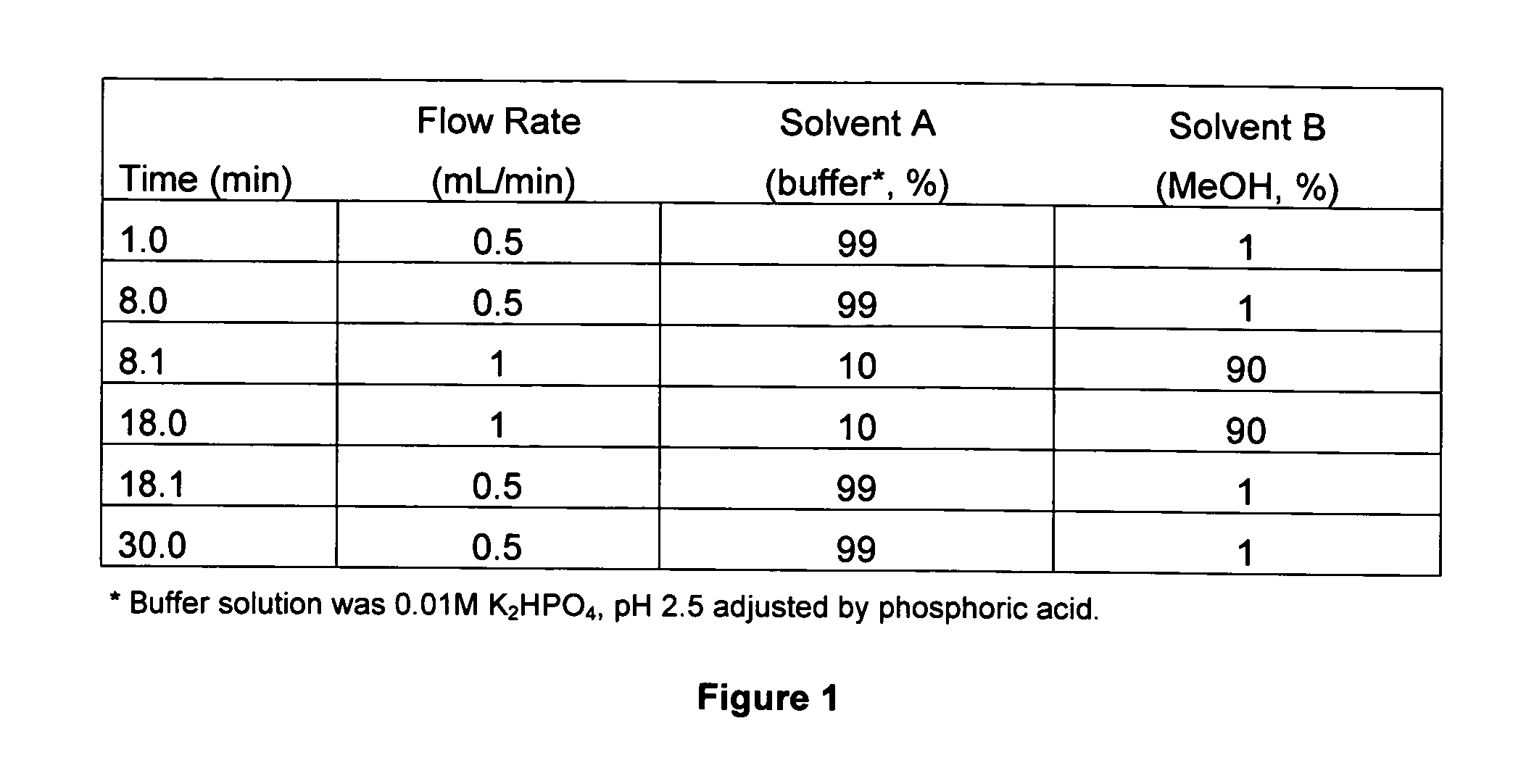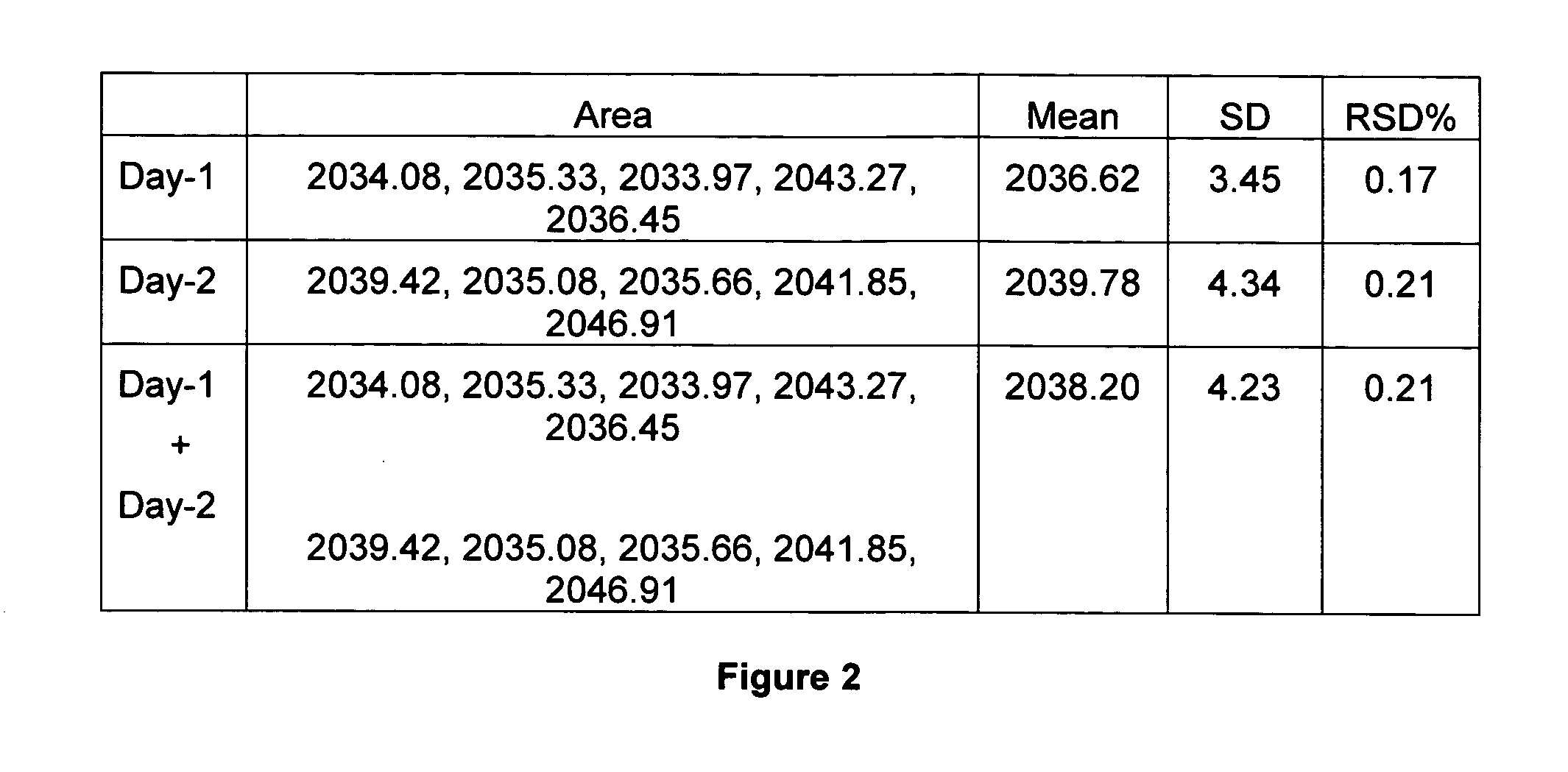Method for the extraction and purification of shikimic acid
a technology of shikimic acid and purification method, which is applied in the separation/purification of carboxylic compounds, organic chemistry, etc., can solve the problems of high mortality rate, high cost, and high mortality rate of domesticated birds, and achieves high yield, facilitate the production of anticipated global requirements, and supply of such fruits.
- Summary
- Abstract
- Description
- Claims
- Application Information
AI Technical Summary
Benefits of technology
Problems solved by technology
Method used
Image
Examples
specific example 1
HPLC and NMR Spectral Analysis of Shikimic Acid
[0160]HPLC Analysis: Reagent grade shikimic acid (Acros Organics, Pittsburgh, Pa., USA) was used to prepare a 0.25 mg / mL stock solution in analytical-grade methanol. To determine the calibration curve, a 0.05 mg / mL standard solution was prepared from the stock solution for HPLC (Agilent 1100 Series, Palo Alto, Calif.) analysis (column: Zorbax SB—C18, 4.6×250 mm, 5 μm; mobile phase: (FIG. 1); detection: UV 210 nm, reference 310 nm; temperature: 36° C.).
[0161]The calibration curve of standard shikimic acid was investigated between peak area (y) and shikimic acid quantity (x, μg). The calibration equation was y=6848.57671x−0.938134 and the correlation coefficient (γ) was found to be better than 0.9999 for standard shikimic acid in the range of 0.05 to 0.8 μg. Intra- and inter-day accuracy and precision were assessed by conducting five replicated injections of standard shikimic acid. Five injections per day were performed on two consecutive...
specific example 2
Shikimic Acid Extraction Efficacy Following Three Extraction Methods
[0164]Plant Materials: Fruit hulls were collected from a mature tree growing in a mesic habitat in Nacogdoches, Texas on Nov. 28, 2005.
[0165]Sample Preparation: Plant materials were allowed to air-dry for 24 h and then dried at 65° C. for 24 h in a gravity-flow convection oven (Fisher Scientific, Pittsburgh, Pa.). Dried plant materials were ground using a Thomas-Wiley Mill (Model ED-5, 1 mm openings, Philadelphia, Pa.). Both whole and ground plant materials were deposited as voucher specimens in the National Center for Pharmaceutical Crops, Stephen F. Austin State University, Nacogdoches, Tex.
[0166]Extraction: Approximately 1 g of sample was extracted with methanol or DI water with >18 MΩ resistance (B-pure, Barnstead International, Dubuque, Iowa) by one of the following extraction methods: (1) soaking in flasks for 4 h at room temperature (21-23° C.) (with two cycles), (2) Soxhlet extraction using 100 mL of methano...
specific example 3
Shikimic Acid Extraction Efficacy Utilizing Three Different Solvents
[0169]Plant Materials: The same fruit hull samples were utilized as presented in Example 2. Yellow leaves were collected from wet habitat in Nacogdoches, Tex. on Dec. 4, 2005.
[0170]Sample Preparation: Preparation method as presented in Example 2.
[0171]Extraction: (1) Approximately 275 g of yellow leaf sample were soaked for 4 h at room temperature (21-23° C.) (with 3 cycles, see Example 10); (2) ASE extraction method as presented in Example 2.
[0172]HPLC Analysis: Method as presented in Example 1.
[0173]Results and Discussion: By utilizing the same ASE extraction method as described in Example 2, water extracted approximately 22% and 43% more shikimic acid than methanol and ethanol, respectively. During extraction of shikimic acid with organical solvents, terpenoids (detected at 203 nm by HPLC) were also extracted from sweetgum and made subsequent purification of shikimic acid more difficult (unpublished data by the p...
PUM
| Property | Measurement | Unit |
|---|---|---|
| Time | aaaaa | aaaaa |
Abstract
Description
Claims
Application Information
 Login to View More
Login to View More - R&D
- Intellectual Property
- Life Sciences
- Materials
- Tech Scout
- Unparalleled Data Quality
- Higher Quality Content
- 60% Fewer Hallucinations
Browse by: Latest US Patents, China's latest patents, Technical Efficacy Thesaurus, Application Domain, Technology Topic, Popular Technical Reports.
© 2025 PatSnap. All rights reserved.Legal|Privacy policy|Modern Slavery Act Transparency Statement|Sitemap|About US| Contact US: help@patsnap.com



